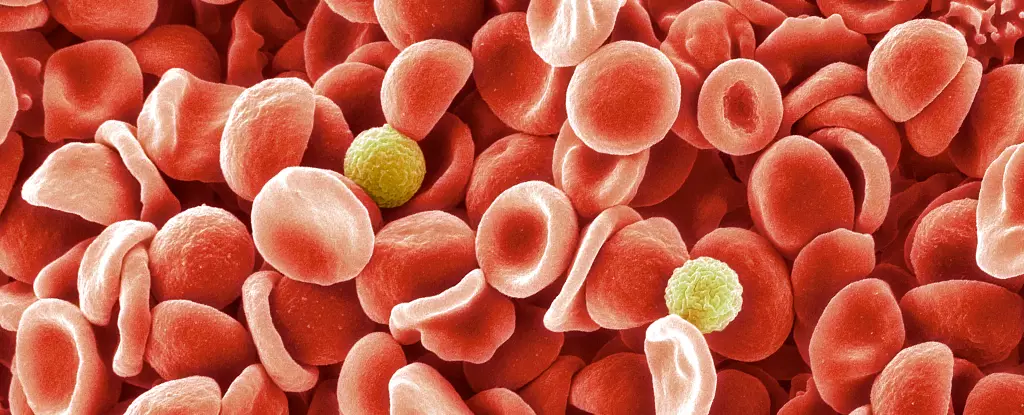In 1972, a peculiar anomaly presented itself during a routine blood test for a pregnant woman; her sample lacked a crucial protein that marked the surface of red blood cells. This oversight, seen as a fleeting medical curiosity at the time, turned into an instrumental piece of a broader puzzle that has recently been solved by researchers from the UK and Israel. Fast forward to 2024, when the culmination of 50 years of investigation unveiled a brand-new blood group system known as the MAL blood group. This groundbreaking discovery not only adds complexity to our understanding of human blood but also heralds new hope for individuals with rare blood types.
What makes this finding particularly significant is the diligent teamwork and expertise of the researchers involved, notably UK National Health Service hematologist Louise Tilley. As she noted, this achievement represents a confluence of years of labor and dedication to the understanding of a rare medical condition that, while affecting a small population, can nonetheless underline critical aspects of healthcare. The meticulous details in the research are not simply a scientific award; they embody the advancements of modern hematology.
The Hidden Universe of Blood Groups
While most people are familiar with the ABO blood type system, the reality is that humans possess a wide variety of blood group systems defined by a diverse array of surface proteins and sugars. Each of these antigens acts as a biological identification marker, delineating ‘self’ from ‘non-self’. This biological distinction is imperative during blood transfusions, where mismatched antigens can provoke severe, life-threatening reactions. The historical identification of major blood groups in the 20th century laid a foundation for understanding human blood, but the discovery of novel blood types, such as the newly classified MAL group, emphasizes the necessity of continuous research.
As we turn our attention to the specifics of the MAL blood group, it becomes evident that this discovery is not only an academic triumph but a vital improvement in patient care. Previous studies had shown that over 99.9% of individuals possess a particular antigen known as AnWj. The absence of this antigen placed the individual from 1972—and others like her—in a significantly isolated medical category, prompting researchers to explore the implications of such anomalies. The meticulous nature of the study launched by Tilley and others highlights a fascinating truth: complexity often surrounds the apparently simple, and nature has layers yet to be peeled back.
Scientific Rigor Meets Real-World Application
One of the most compelling aspects of this discovery is the scientific process itself. Researchers had to tackle the challenge of rare genetic cases and conduct extensive investigations into the underlying molecular structure. The breakthrough involves the AnWj antigen residing on a myelin and lymphocyte protein, which researchers painstakingly tagged as part of the newly established MAL blood group. This wasn’t merely an academic exercise; it was about understanding the full ramifications of blood compatibility for patient safety and effective treatment.
To confirm their hypothesis regarding the MAL blood group, the scientific team performed intricate experiments, including the introduction of the normal MAL gene into blood cells that did not express the AnWj antigen. This experimental clarity underscores the degree of innovation and meticulous detail invested in establishing the MAL blood group. Furthermore, the research revealed that while the AnWj antigen is absent at birth, its emergence shortly thereafter points to a fascinating aspect of human biology that intertwines genetics with developmental phases.
Implications for Future Research and Patient Care
With the identification of the genetic markers associated with the MAL blood type, the medical community can now embark on a proactive approach to patient diagnostics. Testing for genetically inherited MAL blood types as opposed to suppression due to other medical issues can vastly improve understandings of patient health. The intricacies of blood types may seem minute in the grander scheme of healthcare, yet they can profoundly influence patient outcomes.
As studies such as this build upon our existing knowledge, they shed light on rare blood conditions that may carry significant risks. Comprehensive understanding can lead to enhanced protocols in transfusion medicine and informed clinical approaches to managing complex situations. The implications of the MAL blood group research stretch far beyond its rarity; they offer an opportunity to save lives and improve the quality of care for individuals facing potentially life-threatening conditions.
While the study represents an intersection of science and practice, it also reiterates an important message: the quest for knowledge is a marathon, not a sprint. Insight into human biology will always require patience, perseverance, and a commitment to continuous discovery. As researchers continue their work, the promise of more profound insights into human health remains an invigorating possibility, one that fuels both scientific inquiry and hope for better outcomes.


Leave a Reply